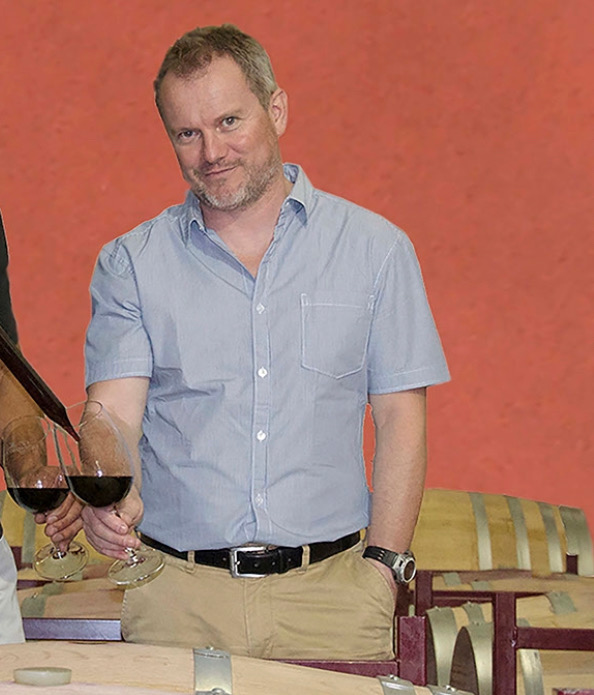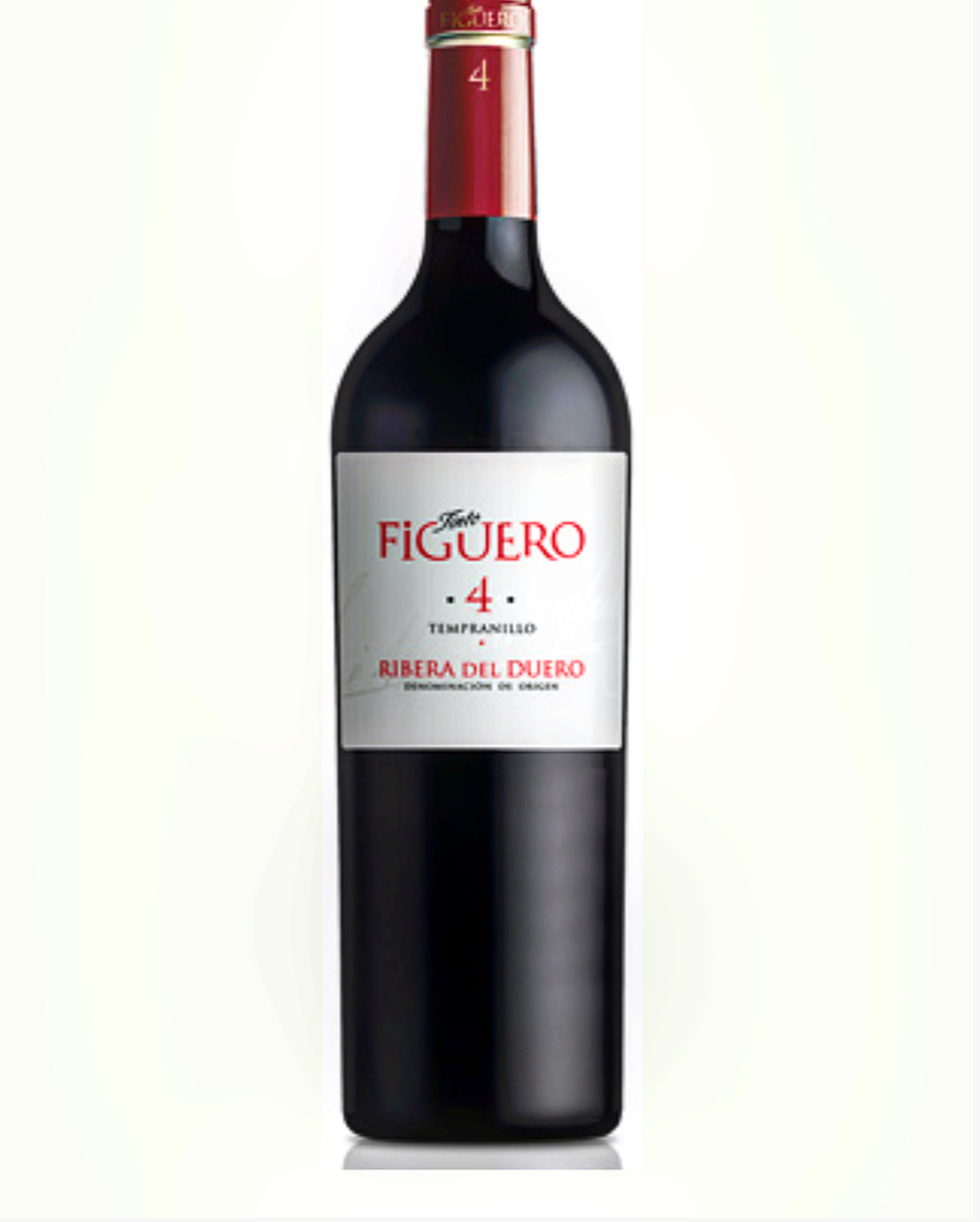Finding Balance in Ribera del Duero’s Figuero Wines
/When choosing a wine to go with a meal, it’s always a safe bet to follow the “what grows together, goes together” adage, and choose wine from the same region as the dish. Tomato-based lasagna with sangiovese from Tuscany, coq au vin with pinot noir from Burgundy, Argentine barbecued meats (asado) with malbec from Mendoza, and so on. But sometimes rules are made to be broken and it can be fun to pair wine with food that originates from a different place, even a different hemisphere! It should work well as long as you match the weight and texture of a dish with that of the wine. Neither element should overpower the other — a light dish needs a light wine, and a rich dish a rich wine.
Zabaglione with fresh berries at Il Mulino.
Most importantly, drink what you like. Why not have a hearty, full-bodied Spanish red with robust Italian classics like Cacio e Pepe, Florentine Steak, and zabaglione custard? That’s exactly what went down recently at Il Mulino Prime, one of Manhattan’s premier Italian restaurants. A group of wine journalists gathered around the table to enjoy some classic Italian dishes with the excellent Spanish wines from Ribera del Duero’s Figuero winery.
Ribera del Duero is famous for full-bodied red wines made from the tempranillo grape, known locally as Tinto Fino. The region’s vineyards stretch alongside the Duero River where the land is a mix of different soils, exposures, and elevations. The climate is continental and the river moderates the temperatures of the vineyards — warming them during the harsh winters and cooling them down in the heat of summer, creating the best conditions for growing tempranillo grapes.
Figuero winery was started by José María García and his wife Milagros Figuero, vineyard owners who grew and sold tempranillo grapes, as their ancestors had done for centuries. In 2001, after many years of seeing their vines consistently produce the finest grapes, the couple, aided by their three grown children, decided to make and bottle their own wines under the Figuero label. Confident that they could create wines that would be a true reflection of their land, they built a state-of-the-art winery and underground aging cellar in the village of La Horra where other notable vineyards can be found, like those of Pingus. The Figuero vineyards are on the north side of the river where there are gravely, calcareous soils, with a lot of sand and clay, known to be ideal grape-growing soil.
José and Milagros (seated) with their family.
Jean-François Hébrard.
In 2010, José and Milagros hired Jean-Francois Hébrard to oversee all of their winemaking. Jean-François, as you may have guessed, is French, but not from just any old place in France. He’s Bordelais — from Bordeaux — a bastion, for centuries, of tradition and excellence in winemaking. Following in his family’s footsteps, he started out making wine in Bordeaux, but it wasn’t long before he wanted a new challenge. “I needed to get out of Bordeaux and see the world, to discover the rest of Europe,” he explained. “When you come from Bordeaux with all of its traditions, everything is so controlled and it’s very difficult to create something new.”
In 2001, Jean-François jumped at the opportunity to move to Spain where he began working in the Ribera del Duero and Toro regions. “It was important for me to work with grapes other than the traditional Bordeaux varieties I grew up with,” said Jean-François. “In Spain, especially in Ribera del Duero, it’s completely new territory. When I arrived, I needed to see what kind of wine I could make. I felt like Christopher Columbus arriving in America!”
At Figuero, Jean-François oversees 53 hectares of organically-grown grapes that are handpicked in the vineyards, after which the fermentation is started in the cellar using natural, native yeasts. Jean-Francois believes that the best grapes — those with the most personality and expression — are grown organically, which is easy to do in Ribera del Duero with its hot, dry climate. “In the end,” says François, “you need the best grapes.”
And just as a good food and wine pairing creates balance between its elements, well-made wines, like those of Figuero, shine with the correct proportions of fruit, acidity, alcohol, and tannins. “I found that while the winemaking is different with tempranillo, the vine growing is in the same spirit as it is in Bordeaux,” says Jean-François. “You’re always looking for balance in the wine.”
Thick, gnarly old vines in Tinto Figuero’s vineyards.
THE FIGUERO WINES
Figuero was among the first wineries in Ribera del Duero whose labels featured the number of years the wine had spent aging in oak barrels. The winery produces several wines, ranging from fruity and fresh expressions of younger vines to richer, more complex and intense characteristics gained from older vines. Over 30% of the vineyards are 60-plus years old with some of the vines dating back to the 1930s. These old vines, with their deeply-grown root systems, are able to extract nutrients buried far down in the soil. The resulting grapes have a high-level of quality, full of concentrated flavors and aromatics.
Following are the Figuero wines available in the United States and suggested food pairings, inspired by my meal at Il Mulino. Of course, you could also stick with the “what grows together” principle and pair the wines with the many excellent Spanish meat, fish, rice, bean, and vegetable dishes. Bon Appétit!
Tinto Figuero 4 is made from grapes grown on the youngest vines and the wine is aged four months in barrel and then sees an additional four months of aging in the bottle before leaving the cellar. These are fruity and fresh wines with good structure, balanced acidity and rounded, sweet tannins. Delicious with Cacio e Pepe pasta. 2018: $22
Tinto Figuero 12 is made from grapes grown on 20 to 40 year old vines. The wines are aged for 12 months in new and one year-old 225 liter barrels, 75% French and 25% American oak. They are then left in the bottle for one year before leaving the cellar. These wines show more elegance, intensity and have a fuller body than the 4. Try with Swordfish with Salmoriglio Sauce. 2016: $32
Tinto Figuero 15 gains structure and complexity from vines that are 50-plus years old. The wine is aged for 15 months in new, mostly French oak barrels and then spends an additional two years in the bottle before leaving the cellar. This is a delicious, full-bodied, juicy wine with with aromas of herbs (dried thyme and rosemary) and hints of licorice. Decant and serve with Il Mulino’s Eggplant Parmigiana. 2015: $66
Figuero Viñas Viejas (Old Vines) is made from grapes grown on vines that are older than 60 years and the wine is aged for 15 months in new oak barrels and an additional year in the bottle. This elegant, intense wine has a beautiful nose of ripe raspberries, cassis, toffee and fine spices like black pepper and nutmeg. Silky and dense on the palate, it has a long finish. Decant and try it with Bistecca Alla Fiorentina (Florentine Steak). 2015: $68
Milagros de Figuero, made from grapes grown on 60+ year old vines, is aged for 15 months in new large, 500 liter French oak barrels and spends an additional year in the bottle before leaving the cellar. The wine has beautiful aromatics of candied red berries, dried fruits, dark cocoa, mint and spice. On the palate, it had a dustiness from the fine tannins and wasn’t as fruity as the nose would suggest. I recommend decanting and pairing with The Wine Chef’s Pork Chops with Tomatoes, Sage, and Thyme. 2014: $100. This wine was my favorite of the evening.
Figuero Noble is made from grapes grown on vines that are older than 75 years! The wine is aged for a maximum of 21 months in new barrels of French oak with an additional two years in the bottle. This is a very complex wine with aromas and flavors of dark berries, licorice, cocoa, coffee, eucalyptus, leather and spices. The finish is long and velvety. Decant and pair with Hearty Italian Meat Sauce with sausages. Only 388 cases were produced. 2014: $162
Figuero Tinus, made from grapes grown in vineyards that are almost 90 years old, rests in new 500 liter French oak barrels for three weeks before being moved to smaller, 225 liter French oak barrels where it ages for a maximum of 22 months. It then spends an additional 15 months in bottle before leaving the cellar. This is a rich, deeply flavored wine with an appealing earthiness and a long, lingering finish. I recommend decanting the wine and serving it with a classic Osso Buco Milanese. Only 1209 750-ml bottles and 29 magnums were imported to the U.S. 2012: $400

































